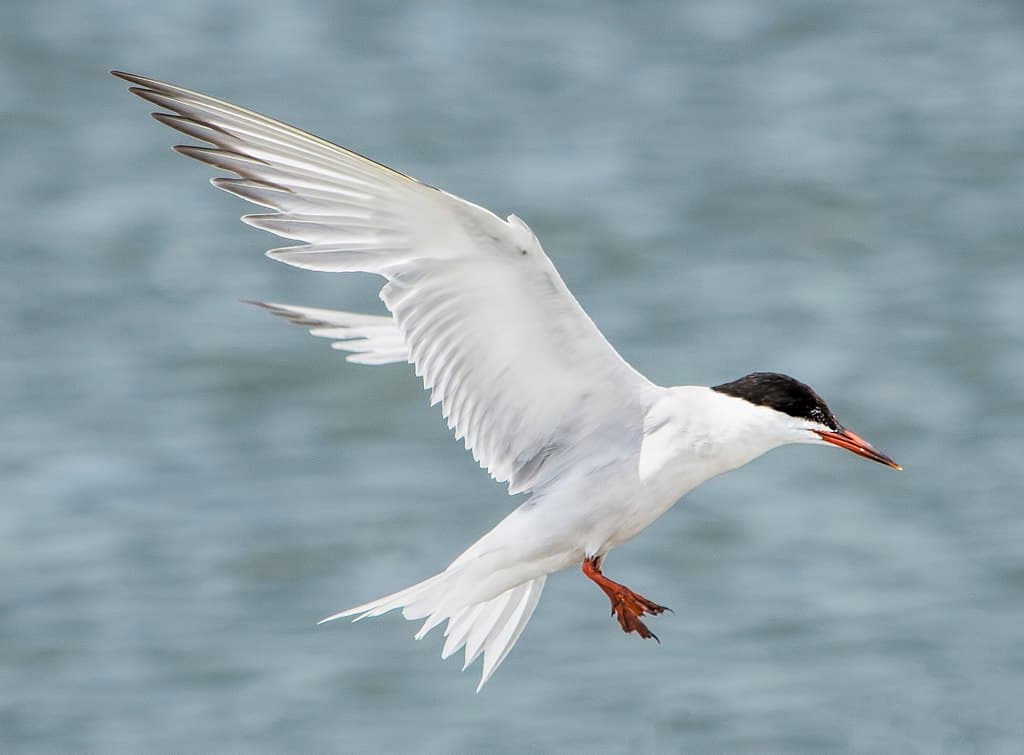Terns are seabirds that have distribution worldwide, mostly near rivers, seas, and wetlands. We have 6 tern species in Cambodia, and there are quite a few interesting facts about them. One of those is that these birds are free from natural predators and parasites which is somehow fortunate. However, their population is still facing threats from direct and indirect human activities such as habitat loss, pollution, and more. Take a look at the list below for more information about the 6 tern species in Cambodia.
Black-Bellied Tern (រំពេពោះខ្មៅ)
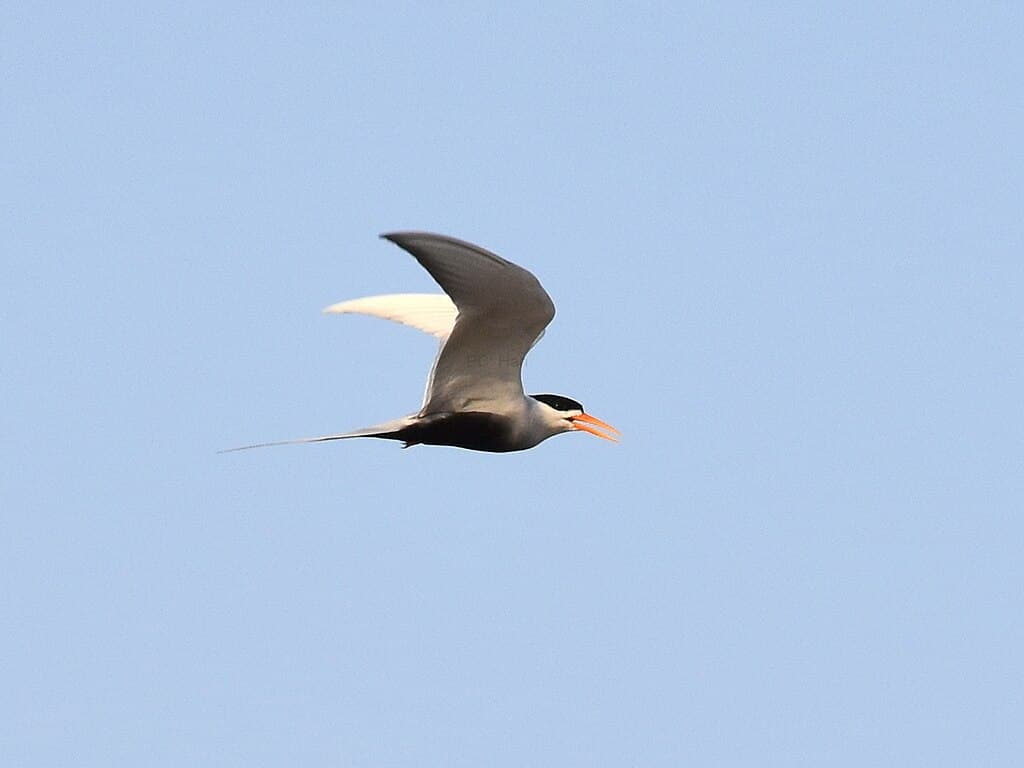
A black-bellied tern can grow to 32 to 35 centimeters, and they have black plumage with a whitish belly. When the breeding season comes, the upper parts are pale gray with black crown and nape. This tern species occurs mostly in Bangladesh, India, Nepal, and Pakistan, with a separate range in Southeast Asia. Within their range, these inland terns live in lowland rivers and marshes; absent from the coast.
The black-bellied terns are classified as Endangered, and they face many threats from both nature and people. Predations of eggs by animals, flooding of nesting sites due to unusual weather conditions, and grave and sand dredging are natural threats. For human activities, egg collections for food, habitat conversion to agriculture, and human settlement and migration into their breeding areas also affect them.
Caspian Tern (រំពេធំជំពុះក្រហម)
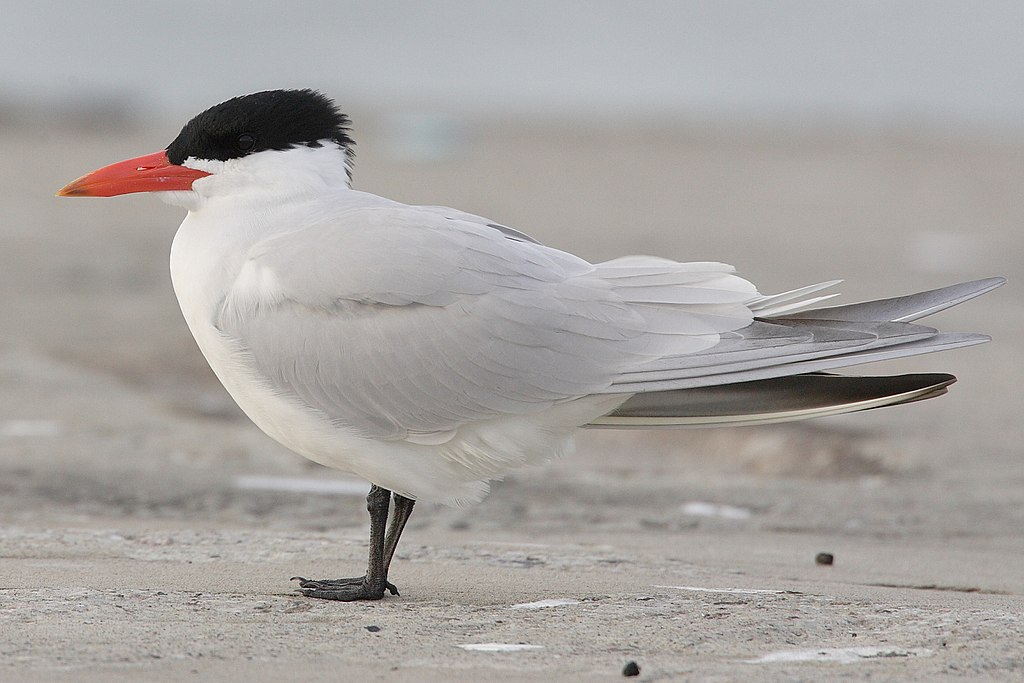
Caspian tern is the largest tern species in the world, reaching a size of 48 to 60 centimeters. On top of that, its wingspan is from 127 to 146 centimeters long which is double its size. An adult Caspian tern has a white head, neck, belly, and tail with a black cap on top. Its upper wings and back are pale gray with dark underwings. The bill of the bird is red with a dusky tip, and it is heavy and strong enough for hunting and protection.
These birds also have a wide range including Africa, Asia, Australasia, Europe, North America, and South America. They favor large lakes and ocean coasts where they breed and dive to hunt fish. Besides fish, these terns also feed on large insects, and sometimes the young and eggs of other birds and rodents. Being burly, Caspian terns are aggressive defenders of their breeding colony so they chase predatory birds and even attack people who come too close.
Great Crested Tern (រំពេកំប៉ោយធំ)
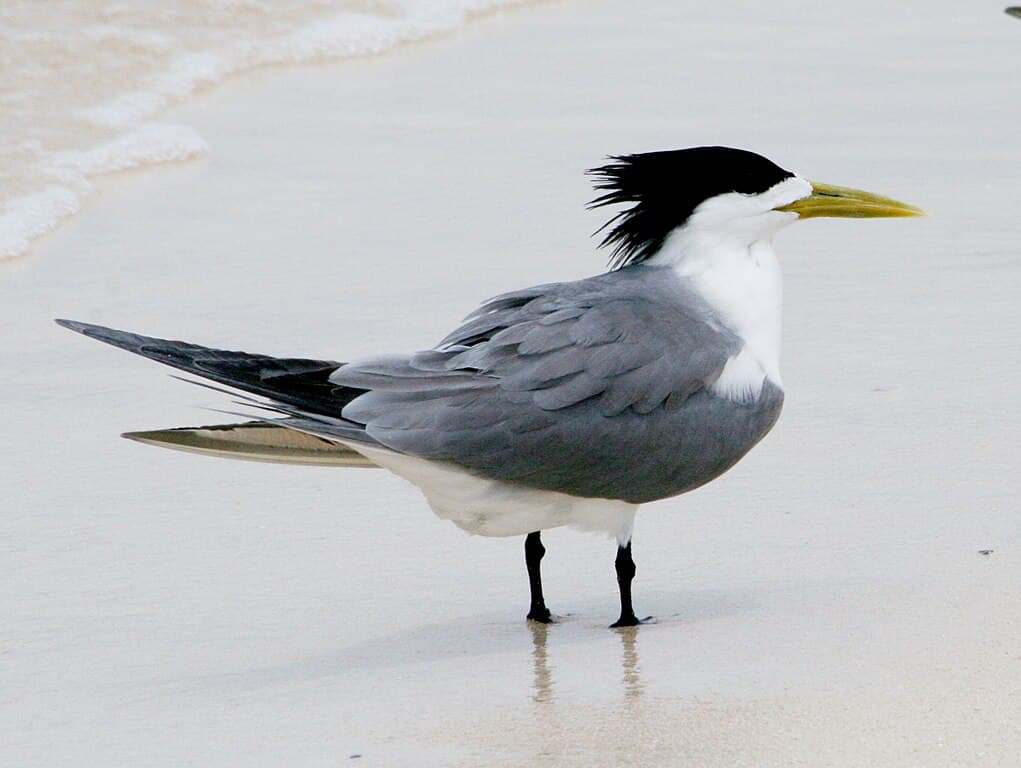
By the look, you can tell why this bird got its name. A great crested tern or crested tern is a large bird with a shaggy black crest on its head. It can grow to the size of 46 to 49 centimeters, with a graceful wingspan of 125 to 130 centimeters. The bird has a white forehead and underparts with a dusky-gray back and inner wings. When winter comes, the upper plumage becomes pale gray while the crown becomes white.
This tern species prefers tropical and warm temperate coastal parts of Australia, the Indian and Pacific Oceans, and South Africa. Their habitats and natural ecosystems also include coral reefs, estuaries, sandy beaches, shallow seas with submerged macroalgae, and tidal flats. Not different from other terns, this one also feeds mainly on fish but is not limited to cephalopods, crustaceans, and insects. As monogamous, the pair remain together for years and breed in colonies with other pairs. Currently, there are many threats that affect them such as climate change, habitat loss, collisions with trawl traps, and trapped in trawls.
Little Tern (រំពេតូច)
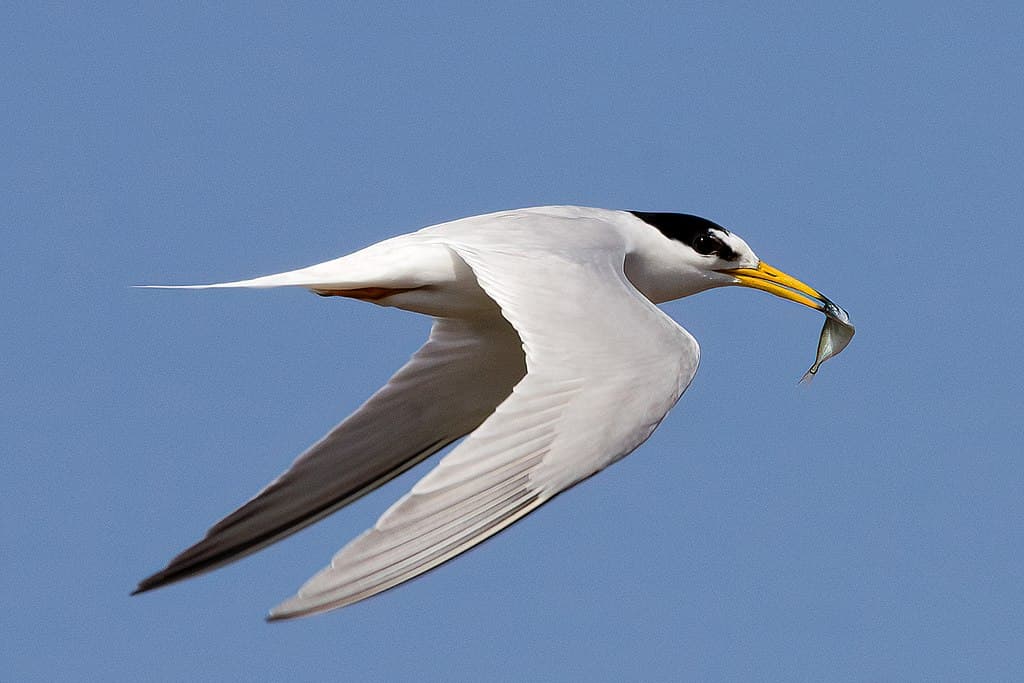
With a size of just between 21 to 25 centimeters, the little tern is indeed little. The bird has a silvery-gray upper parts and white lower parts with a black cap and eyestripe, and a white forehead. The bill is long and yellow with a black tip while the legs are yellowy-orange, and it has a long forked tail. The population of little terns is distributed across Asia, Australia, Europe, North America, and South America. They used to be so common around rivers, shores, and wetlands but not anymore due to habitat loss, human disturbance, and pollution.
River Tern (រំពេទន្លេ)
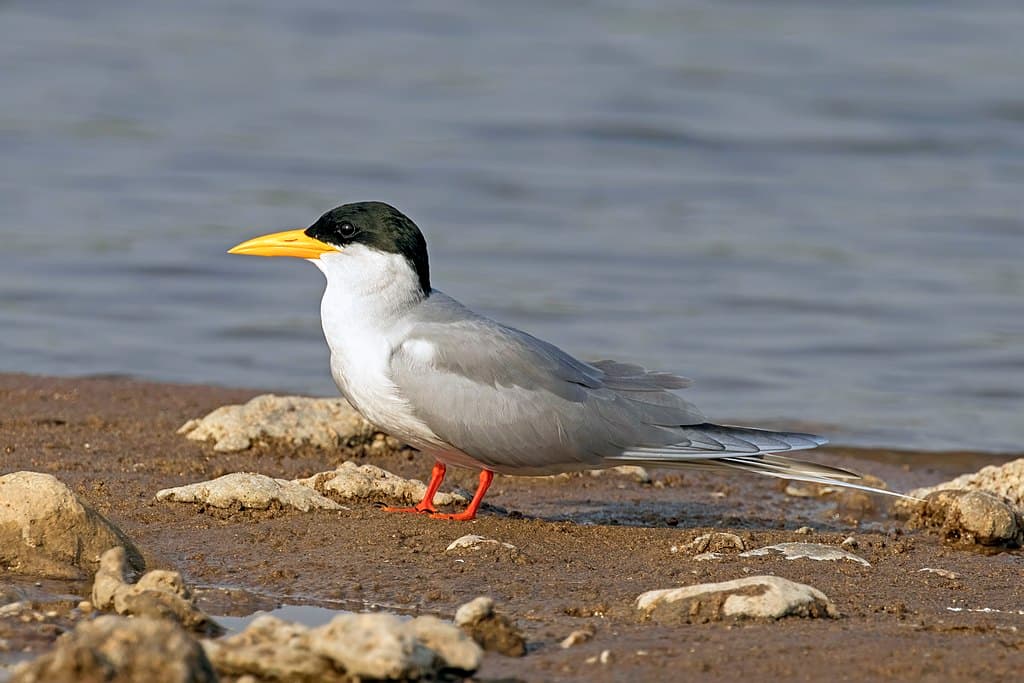
The river tern is one of the most common tern species in Cambodia, with a stable population for the past two years. River terns are medium-sized birds that grow up to 38 to 43 centimeters, with a distinctive appearance. A river tern has dark gray upperparts, white underparts and cap, long pointed wings, and a forked tail with long flexible streamers.
Like other tern species, river terns feed by plunge-diving for crustaceans, fish, tadpoles, and other aquatic insects. They usually hunt in lakes, rivers, and tanks where food is abundant. Today, their numbers are decreasing because of the pollution in their habitats. River terns are considered Threatened on the IUCN Red List, but their increasing number in Cambodia implies hope for a better future population.
Whiskered Tern (រំពេពោះប្រផេះ)
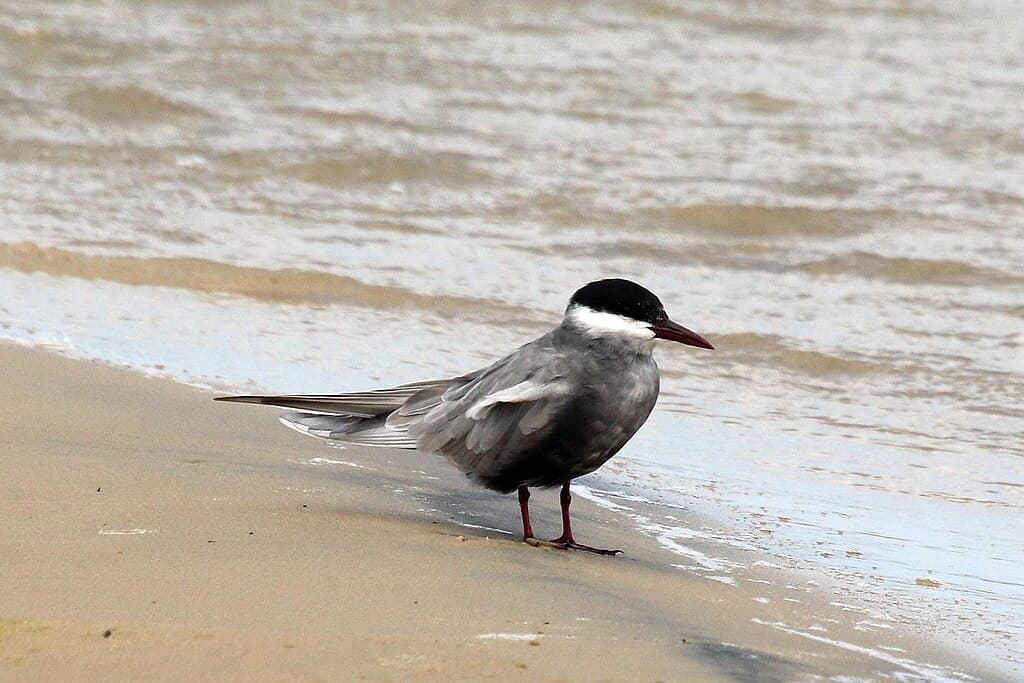
A whiskered tern has a pale gray shade with a black cap and extensive white cheeks. The breast and sides of the bird are gray with a darker gray patch on the belly. Its legs are fairly long, and the black bill with a reddish tinge of this bird is very strong. Whiskered terns are agile in the air, and they are very precise when it comes to hunting. They dip down to pick up food from the water or on the ground very accurately. When it comes to food, they feed on crustaceans, fish, insects, small mammals, and also frogs, lizards, and mice.
Related Post: Egret Species In Cambodia
